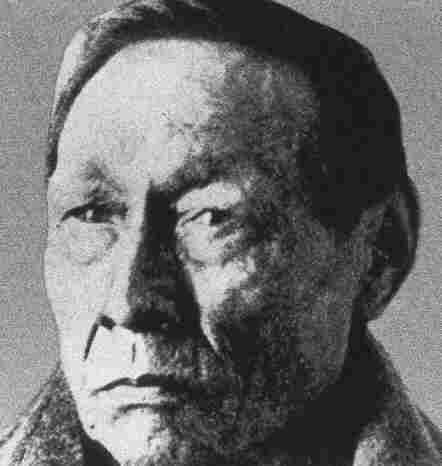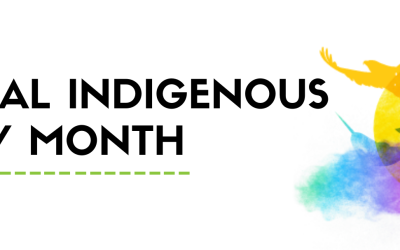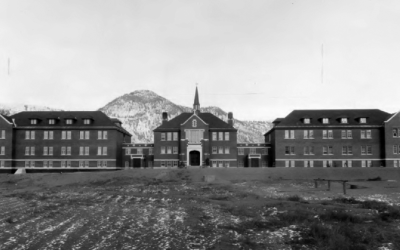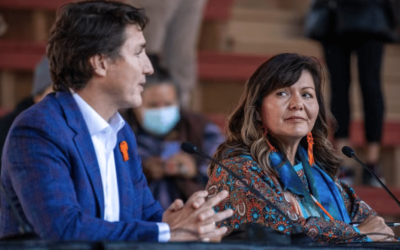Introduction
An important new paper points the way to the resolution of an historic blight on Canadian society – the social and economic health of our First Nations population. Aboriginals as a distinct group have not fully participated in the wider prosperity of the country whose First Citizens they compose. Nor is there any real dispute – not even from native leaders – that too many of Canada’s indigenes live in dysfunctional social conditions. A new approach to these problems is now emerging, and properly from within that community’s ranks. It cuts through the cant of native politics and argues for a solution framed by the needs of individuals and families, not those of their leaders or the anonymous government officials who control their destiny.
The paper is entitled The Rebirth of Big Bear’s People. The Treaties: A New Foundation for Status Indian Rights in the 21st Century and was excerpted in a recent issue of Inroads, a scholarly neo-left journal. It was written by Jean Allard, a lawyer, businessman and long-time activist in Manitoba’s aboriginal and Métis community who served as a Member of Manitoba’s Legislative Assembly from the constituency of Rupertsland in 1969. As part of Manitoba’s first New Democratic Party government, his political future was considered bright, and he enjoyed the high regard of Premier Ed Schreyer. He was dissatisfied with the government’s direction on aboriginal and other issues, left the party’s benches in 1972 to sit as an Independent and did not seek re-election.
Allard is a descendant of the French settlers who intermarried with aboriginals in the Red River Valley in the early 1800s. In 1996, he chained himself to the controversial statue of Louis Riel on the Legislature grounds, in an unsuccessful attempt to prevent its replacement by a more conventional depiction of Manitoba’s Métis founder. Jean Allard has been building the case laid out in this paper throughout his career. He has received support for its conclusions from other forums, including Winnipeg’s Social Planning Council.
Who Was Big Bear?
 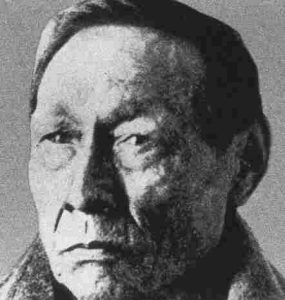 |
| Big Bear during trial, 1885 |
Big Bear was a half-Cree, half-Ojibway leader and medicine man born in 1825. His own family had endured famine and smallpox, but he eventually came to preside over a band estimated at 400 family lodges, about 3,000 individuals. In 1882, Big Bear became the last prairie chief to sign the numbered treaties that established the Indian Reserve system. Although all other plains leaders had signed treaties by 1876, Big Bear refused to sign when presented with Treaty Six in 1878. He feared that the loss of freedom entailed in it would crush his people’s way of life. Already compromised by disease and warfare, his people faced extreme destitution due to the collapse of the buffalo hunt, and knew a national railroad would seal their fate. The Government of Canada withheld emergency rations and promised signing bonuses and retroactive treaty money to coerce Big Bear’s signature. The imminent starvation of his immediate family closed the matter.
Allard uses the circumstances of Big Bear’s delay to make some seminal, if uncommon observations. First was the intensely spiritual nature of pre-European society on the plains. Big Bear’s four-year agon, during which he withdrew from active leadership of his flock and stopped negotiating, took the form of a religious retreat, commanded by a vision. His concern about the effects of reserve life on his people, borne out by their history since, spurred him to seek a spiritual solution. Allard describes a latter-day revival of that recourse now growing among aboriginal populations on the prairies, and believes that it will confirm Big Bear’s foresight by proving to be less futile than premature. In short, native Canadians are finding their way back to the psychological strength that characterized their historic legacy.
Voting With Their Feet
The second lesson of Big Bear has direct relevance to public policy. By the time his spiritual sojourn ended, only 114 individuals remained loyal to him. Allard draws no negative conclusions about the moral stature of the apostates – the choice between servitude and a full stomach would, after all, challenge the best of us – but uses the incident to illustrate an important fact of pre-reserve arrangements. The nomadic native society of the plains employed a powerful incentive to assure accountability on the part of its leaders:
In the times before settlers arrived and surveyors divided up the land on maps, families were free to take their lodge and move to another tribe if the leader or the community was not to their liking. The success of a leader was easily measured by the number of lodges in his tribe. Those leaders who abused their positions, made poor decisions about where to hunt or camp, or treated people contemptuously quickly lost their tribe. A family would simply pack up their lodge and move on. A chief did not order his people to follow his wishes. He advised them of his plans, and if people disagreed with him, they were free to make their own decisions about whether to continue to follow him or join a different tribe. It was an effective way of providing the checks and balances on the power of a leader.
The Flaw in Self-Government
Allard’s analysis of the hierarchical and patronizing relationship between the Canadian government and native people under the Indian Act is not new. It has received ample support from within the indigenous community and without, including a Frontier Centre policy series study titled The Search for Aboriginal Property Rights1. Yet he gives it new poignancy, a product of his long and intimate relationship with the problem. He traveled to reserves with the Royal Commission on Aboriginal Peoples in the mid-1990s and reports the shocked appreciation by Supreme Court Justice Berthe Wilson of the level of despondency in Indian men.
Allard expresses a deep, if informed cynicism about the potential to reverse that emasculation by the means of self-government:
. . . [T]he men sought to reassert their manhood through the illusory power of Chief, band council and Indian political organizations. But that power was not really theirs because it was authority given by Indian Affairs, and therefore controlled by Indian Affairs. But the power trap was also well-baited with money.
A New Approach
The current process began when Jean Chrétien, then Pierre Trudeau’s Minister of Indian Affairs and Northern Development (DIAND), tabled his White Paper2 in Parliament in June, 1969. It called for the repeal of the Indian Act and for government responsibility for Indians as a separate group to end. A storm of protest from aboriginal leaders, encapsulated in the Red Paper penned by Alberta’s Harold Cardinal later that year, interpreted the government’s intent as assimilation. They demanded that the treaties be followed as written, including a transfer of direct authority to their bailiwick.
This scenario fed into the psychology of white guilt, Allard trenchantly points out, and it also suited the crowd at Indian Affairs, who saw self-government as a vehicle to forestall their own elimination. The new focus presented them with “[a] veritable smorgasbörd of problem to be studied and analyzed by professionals . . . a wealth of opportunity for programs for professionals to design and administer . . . a bounty of needs to be professionally attended to.” Federal spending on natives mushroomed from about $262 million in 1969 to more than $6.3 billion in 1999.
Follow the Money
New definitions of who did or did not qualify as a treaty-status Indian increased the constituent class by 40%, but the money allocated to “helping” it went up by a staggering 2,680%. Although DIAND underwent a mild downsizing in staff, Allard describes it as “a lateral shift from Indian Affairs to the Indian organizations. This mutually beneficial relationship gave rise to a vast, absorbent layer of consultants, program officials and administrators, and professionals of all kinds to soak up much of the money that filtered down through the system . . . .”
Trouble is, Allard points out, “[r]eserves are one-dimensional systems.” Their structures contain no counterbalancing forces, as do non-native social orders in Canada, so that all problems are attacked through “the single field of politics . . . . The ruling elite exercises total control while the impoverished class is voiceless and powerless.” He adds:
Without checks and balances that have been built in to democratic government over the centuries, the results are a foregone conclusion. The field is wide open to corruption with all its attendant ills – nepotism, fraud, and misuse of authority, extortion and abuse of human rights . . . . There were many exceptions as people fought the corrupting effect, but slowly and inevitably greed and personal ambitiousness took hold. People with good hearts and good character who were concerned with the welfare of the people were soon weeded out. That left the people whose first priority was to serve the system – the source of their money and power – in charge of the welfare of the people on the reserves in all its aspects. Ultimately the ordinary Indian found himself, as he or she is today, powerless and despondent, living with the resultant social disorganization.
Allard points out that Cardinal soon saw the new problem and eventually “walked away in disgust and despair.” He now thinks that “[n]on-accountability is the reward that Indian Affairs gives to chiefs and councils for their compliance.”
The Structure Needs the Problem
Relying on democratic institutions for the accountability of leaders simply hasn’t worked. The people most affected by the failure of the money to rectify poverty – the women who seek educational, health or social services for their children – have been effectively excluded from the process by arcane and arguably unconstitutional definitions of treaty status. Allard writes:
It is truly appalling that billions and billions of dollars from the taxpaying public have gone and continue to go into a system that inflicts such harm on the very people it is supposed to be helping. . . . Their problems cannot be fixed because their very neediness is absolutely essential to sustaining the whole system. There is no escape. Those in authority – elected leaders, government officials – cannot help because they are the jailers masquerading as advocates and helpers. The ‘helpers’ are the ones inflicting the harm. In that context, oblivion through sniff or alcohol becomes a reasonable option.
Allard provides a long, and perhaps superfluous proof of the misdirection of resources, given its extensive coverage in the popular press. He accurately documents what may not have received as much attention, namely the manipulation of census counts and the attendant grant fraud that ensues. He claims that nearly half of Canada’s status Indians have simply migrated to cities, where they have at least a chance at a better life.
The Unsung Heroes
Many others in the native community share Allard’s perspective, and one remarkable person in particular receives his special attention. In 1995, Leona Freed, a resident of Portage la Prairie was robbed of her treaty status because she married a non-aboriginal. Angry beyond consolation, she then suffered and has since experienced a high level of personal danger in her efforts to challenge the corrupt and impenetrable governance on most reserves. Freed has since blossomed into a national figure, galvanizing aborginal opposition, especially among women, to the hardscrabble life they are forced to live on reserves.
Although Allard supports such efforts, he thinks they will ultimately fail in their mission to exact accountability in the closed system of self-government. The correction Allard call for is rather more radical. He wants to reconfigure the spending and direct it where it will do some good – at individuals.
A Modest Proposal
Big Bear proposes an innovative reform, one with a better chance of success than simple lobbying.
When the numbered treaties were signed, each status Indian was promised an annual cash grant of five dollars a year per person. Believe it or not, many bands still hold annual, ceremonial pow-wows where people line up for their cash, still the same, unindexed amount promised decades ago. Allard applies an interesting inflator to that figure.
In 1875, “five dollars was enough to buy five acres of land in southern Manitoba. . . . That land now sells for $1,000 an acre.” In other words, if the treaty money had increased in value by the same proportion, it would be worth $5,000 a year per person. That translates into about $400 a month for each individual, and that’s where Allard would direct it. Not into the pockets of tribal leaders, but to those who now live by their not-so-tender mercies.
The policy shift, when augmented by the modest incomes working natives already enjoy, would effectively lift most of them into the middle class. Allard calculates that treaty payments expanded to this level would take up just half of current budgets. The rest he would leave in existing pipelines where it would adequately underwrite existing services, the need for which would be much reduced by putting resources directly into the hands of individuals.
A Way Out
Reconfiguring aboriginal spending in this way would have other advantages. Most important is the fact that it could be accomplished by a simple administrative change within the structure of existing treaty law. It would not require months of years of negotiation with stakeholders who have become experts at protecting their turf. “Those who have fed off the misery of Indians because the financial pickings were so good,” Allard writes, “will disappear as soon as the money starts drying up. They will, as vulture do, go off in search of another carcass to pick clean.”
This reform would also do much to reverse the cycle of dependency that has afflicted so many aboriginals. Treaty money is not the same as welfare, it is a right enshrined in law, not a handout. Allard envisions a future in which reserve economies would become entrepreneurial cultures, in which residents with money in their pockets would automatically generate accountability from their leaders. If they didn’t offer timely, high quality services to their bands, they would experience Big Bear’s ignominious fate. Their people would simply vote with their feet.
Why Not Go All the Way?
In The Search for Aboriginal Property Rights the Frontier Centre argues in favour of decollectivizing property on reserves, where individuals are now forbidden to own their homes or the land they sit on. This change would allow reserve residents to leverage their hard assets for capital, the mother’s milk of western societies and a major source of the general prosperity so elusive for natives. Allard believes this would require too many major changes in law to achieve, and that it would threaten the communitarian basis of native society, the very thing that distinguishes it from its non-native counterpart. It would be too threatening.
We will have to disagree about that. In fact, the dispersal of assets would have the same salutary effect as decentralizing the payment of cash, to strengthen communities by shoring up the social units that compose them.
Conclusion
Many will argue, indeed Jean Allard explicitly admits that most of what he says in this new treatment has been suggested before. That is true enough, but it does not diminish the value of his effort. He directly connects his policy reforms to the history and culture of the First Nations from which he is partly descended. He’s lived through the politics and experienced the pitfalls of current native policy first-hand.
It is aboriginals themselves that are suffering the consequences of the failed system they so laboriously defend in official forums. It is aboriginals themselves who must be convinced of the need for change. Allard is uniquely positioned to begin that debate in a substantive manner.
Big Bear may not become a must-read on reserves, but it ought to.
